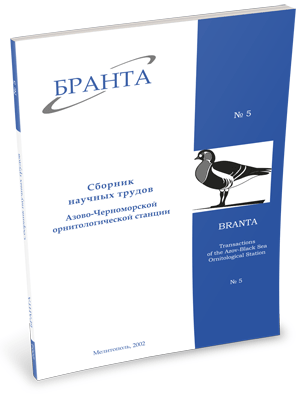
Transactions
of the Azov-Black Sea Ornithological Station



Feeding behaviour of Little Stint and Curlew Sandpiper in the breeding areas of the North-Western Taimyr.
Kirikova T.A.
Basing on analysis of Waders feeding behaviour and distribution of their foraging items there was estimated how Little Stint and Curlew Sandpiper influenced soil invertebrates, including Tipulidae.
The data were gathered in Arctic tundra subzone in the "Willem Barents" biological station region (North-Western Taimyr, 73°21'N, 80°32'E, fig.l) from June 3 to August 13, 2001 during the joint Dutch-Russian-Ukrainian expedition.
The total duration of feeding behaviour observation of breeding Waders (3 nests of Little Stint and 3 nests of Curlew Sandpiper) was 128 hours, observation of birds feeding behaviour before and after nesting took 16 hours, and duration of observation of the Little Stint brood was 23 hours. Feeding efficiency was visually estimated according to the number of captured or swallowed foraging items during a certain period of time.
Intensity and efficiency of Waders feeding behaviour are estimated in the paper during different periods of nesting life, basing on the results of studying foraging items of birds.
The diet of fledglings was more specific for every species. As a result their food niches overlapped in considerably less degree than that of adult birds.
During incubation Waders spent for feeding 31% of their daily time budget. But two days before hatching this share decreased to 27% for birds, incubating during the first ten days of July, and to 15% for birds, incubating during the next ten days of July. Thus it was equal 8% of the time budget on the day of hatching.
Preliminary estimation showed that within their individual areas one Little Stint ate 0.67% larvae of Tupulidae diptera, and 0.85% of Enchytraeidae; while one Curlew Sandpiper ate 1.4% larvae of Tupulidae, more than 2% of Enchytraeidae and 1.5- 2 ‰ of earthworms out of their total number.
Read the paper in a PDF file